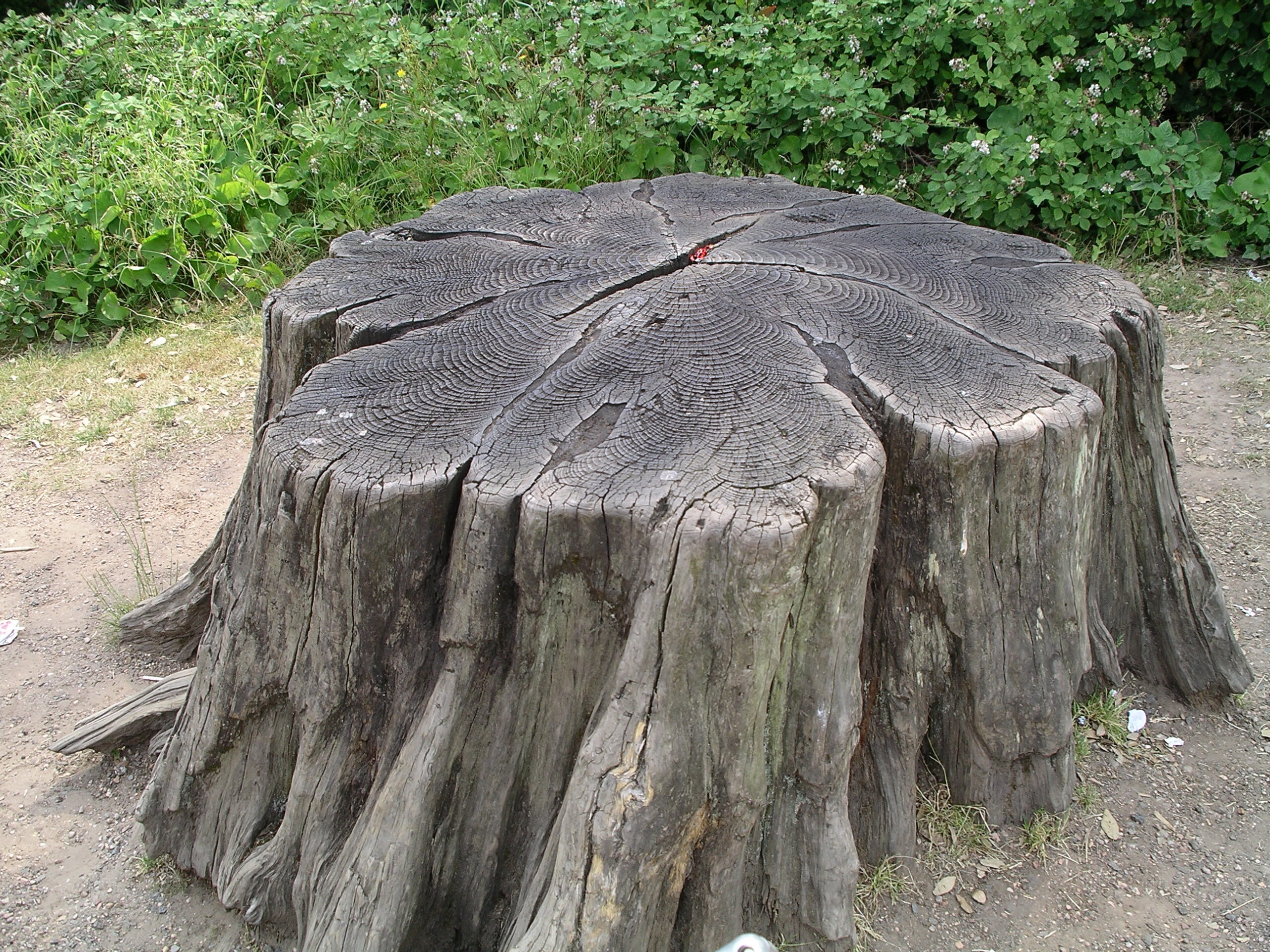Tree stumps can be an eyesore in your landscape and can take a very, very long time to decay. Sometimes up to seven years! Basically, you have a larger chunk of carbon sitting in your yard, and depending on the type of tree, it may still be alive and ready to put out new shoots.
Of course, a tree stump will decay eventually on its own but it might take decades to disappear. You can hire a stump grinder to bring an expensive heavy-duty piece of equipment to grind down the stump lower than your soil but it will cost you a lot of money.
To speed up the natural decaying process, it’s important to introduce nitrogen to the carbon in the wood so that decay can occur. But first, you are going to want to get the wood cut down as close to the ground as possible.
Step One: Remove as much of the stump as you can with cutting tools
The tree removal crew probably left a decent amount of the stump still above ground. You can take off the last remaining inches with a chainsaw, reciprocating saw or ax.

Step Two: Drill holes and split open the stump
In the second step of getting rid of stumps quickly, you will want to introduce holes and cracks into the stump. This will allow water to seep in and will allow you to introduce nitrogen deep into the stump. You’ll do this by drilling and splitting holes in the stump. Here are some tools that will come in handy.

Step Three: Dry the stump out with Epson salt
Covering the stump with Epson salt will kill the stump and draw out moisture. Let a heavy coating of Epsom salt sit on the stump for a couple of months or until you don’t see the salt anymore. The Epson salt will pull moisture from the stump and make it more porous allowing water to seep in and help with the decay process. Epson salt is an inexpensive product and in small quantities provides the soil with needed nutrients. It’s not the same as regular salt (sodium chloride) which can kill the soil. Epson Salt is a magnesium sulfate a chemical compound made up of magnesium, sulfur, and oxygen.
Step Four: Introduce Nitrogen to the stump
Now that the stump has been cut down, compromised with holes and splits and dried out with Epson salt, it is time to introduce some high nitrogen sources so the stump can rapidly decay.
You can use lawn fertilizer, dog waste, urea (pee), compost or any other material that has a lot of nitrogen but probably the best is Potassium Nitrate.
Potassium Nitrate is used as a food preservative and in some toothpaste but when added to a tree stump it provides a lot of nitrogen. Also known as Saltpeter (potassium nitrate) is an effective choice for breaking down tree stumps. When applied to stumps, it stimulates wood decomposition, breaking it down quickly and giving a complete kill. Use a half-inch drill to make holes in the stump at least 4 inches deep and 4 inches apart.
Copper Sulfate is often used to kill tree roots in drain lines. It’s a powerful caustic chemical so use it with caution as it may kill nearby plants.
Commercial stump killer and rotting agents are available but they basically use Saltpeter (potassium nitrate) as the active ingredient.
How does Nitrogen increase stump decay?
The nitrogen feeds the fungi and bacteria that decompose the stump. Fertilizers with high nitrogen percentages will increase the speed of stump decay. Both ammonium sulfate and ammonium nitrate are nitrogen fertilizers and contain no phosphate or potassium.
Warning – handle all chemicals with care – wear gloves and a mask. Contact can cause eye and skin irritation. * Breathing Potassium Nitrate can irritate the nose and throat causing sneezing and coughing. * High levels can interfere with the ability of the blood to carry Oxygen causing headache, fatigue, dizziness, and a blue color to the skin and lips (methemoglobinemia).
You can also try Urea which has a very high nitrogen value – this one is 46-0-0 which means the Urea contains 46% Nitrogen (the highest Nitrogen content of any fertilizer).
Step Five: Add water
Water is needed to start the chemical reactions with the chemicals you introduced to the stump.
Step Six: Patience
These steps will increase the rot time of the stump but keep in mind the fungi and bacteria which will be eating away at your stump will take time to do their magic. Just be satisfied that your work will pay off eventually.
